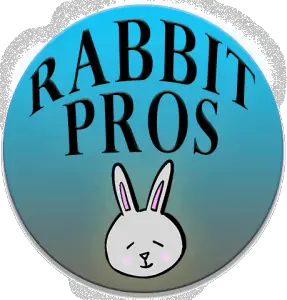Disclosure: We may earn money or products from the companies mentioned in this post.
In this article, we learn more about nine of the smallest rabbit breeds in the world. All of these tiny bunny breeds weigh from 1 lb to 5 lbs. Most of the breeds listed are officially recognized by the American Rabbit Breeders Association.
In other articles, we’ve covered the topic of the biggest rabbits one can own. However, big rabbits need big space. For some bunny lovers, this is a luxury that they cannot provide. Others just don’t like owning big rabbit breeds, small rabbits up the cuteness factor because they look like little balls of hopping fur.
Whether you have a soft spot for small creatures or would like to expand your pet family to include a little breed of bunny then this article is for you.
We’ll start with a table of the smallest bunny breeds so you can get a general overview, then we’ll dig into the details about each breed complete with pictures and videos.
9 Small Rabbit Breeds
| Rabbit Breed | Mature Weight | Temperament | Life Span |
|---|---|---|---|
| Netherland Dwarf | 1.1 to 2.5 lbs | Highly intelligent, active, tend to be skittish | 10 to 12 years |
| Britannia Petite | 2 to 2.5 lbs | Curious, sweet, energetic | 6 to 10 years |
| Dwarf Hotot | 2.5 to 3.5 lbs | Sociable and affectionate | 7 to 10 years |
| Jersey Wooly | 2 to 3.5 lbs | Playful, gentle, and docile | 7 to 10 years |
| Polish Rabbit | 2.5 to 3.5 lbs | Friendly, gentle, sweet-tempered | 5 to 6 years |
| Teddy Dwarf | 1.8 to 3.5 lbs | Gentle, docile | 5 to 6 years |
| Lionhead | 2.5 to 3.5 lbs | Intelligent, well-mannered | 8 to 10 years |
| Miniature Lion Lop | 3 to 4 lbs | Active, friendly, sweet-tempered | Up to 17 years |
| Holland Lop | 2 to 4 lbs. | Sweet, gentle, good with children, active | 5 to 7 years |
The Smallest Rabbit Breed – Domestic Pet Rabbit Breeds Only
The smallest rabbit breed is the Netherland Dwarf. These tiny bunnies weigh just 1.1 to 2.5 pounds when fully grown and is small enough to be cupped in the hands of an adult. These rabbits are only 5 inches long when sitting and when stretched out, they are only 12 to 19 inches long toe to toe.
You’ll notice that I very carefully specified that the Netherland Dwarf rabbit is the smallest ‘domestic pet rabbit’, there is a small rabbit, but we’ll get into that later in this article.
Dwarf Rabbit Vs Mini Rabbit
Before we begin, let’s define some terms that are going to be important in our discussion on the topic of small breeds of rabbits; Dwarf Rabbits vs Mini Rabbits.
Most small breeds of rabbits are either mini rabbit breeds or dwarf rabbit breeds, but they are not the same thing. It’s hard to tell the difference because physically the breeds are all small in stature. However, knowing the difference between these two is important if one is to be well versed in things bunny-related.
Dwarf Rabbit Breeds carry the dwarfism gene. These rabbits exhibit the traits that come with dwarfisms such as short ears, large eyes, and heads that are disproportionately larger than their bodies. The dwarf gene should only come from one parent otherwise, the baby rabbit will be a “peanut” or a stillborn.
Mini Rabbit Breeds can have the dwarf gene but they do not always have it. Mini rabbits do not exhibit the traits of dwarfism, which include short ears, large eyes, and disproportionately large heads, but are instead simply miniature versions of other larger rabbit breeds.
P.S. I did a whole article about dwarf rabbits and dwarfism…it’s a good read.
The 9 Smallest Rabbit Breeds – Learn More
Once again, remember that this is a list of the smallest pet bunny breeds. There is a smaller rabbit than these, but it’s an endangered wild rabbit breed that we’ll talk about at the end of this list.
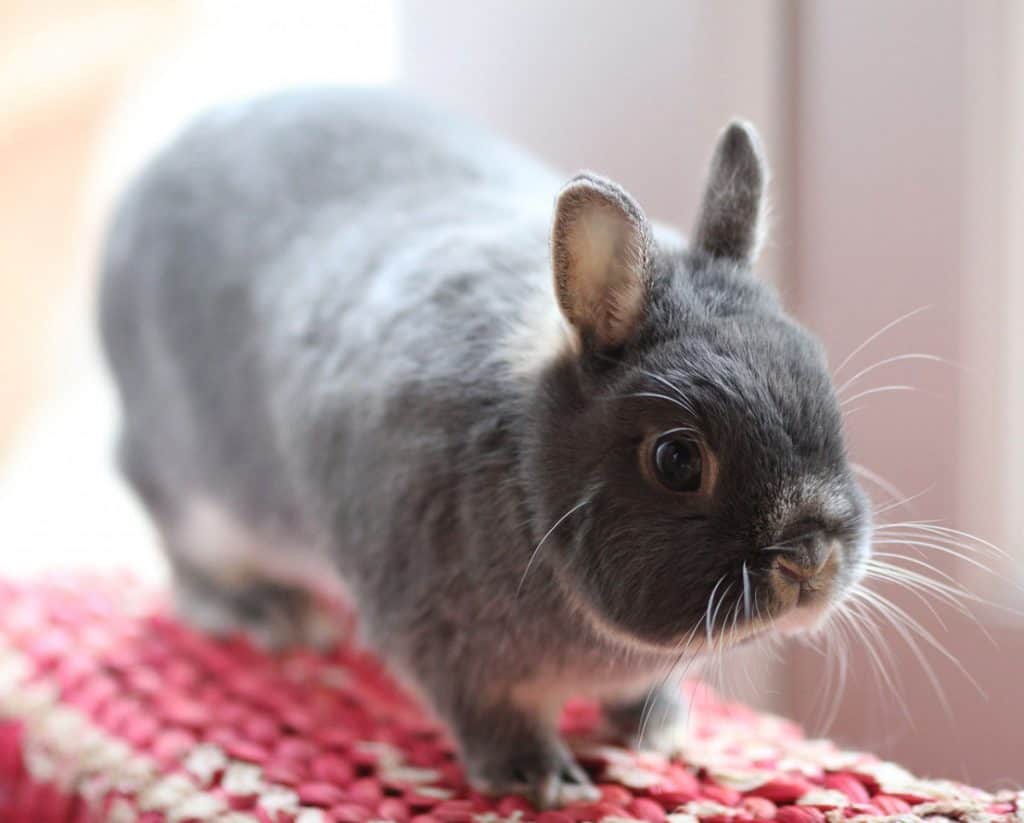
1. Netherland Dwarf Rabbit
The Netherland Dwarf Rabbit is a dwarf rabbit meaning that it has the dwarf gene and associated traits. It is one of the world’s smallest breeds of rabbits.
They are also one of the most popular rabbit breeds across the United States.
The breed originated from the Netherlands. Do not confuse the Netherland dwarf with the Polish rabbits or the Holland Lops. Holland Lops are considered to be the smallest rabbit in the Lop category but Netherland Dwarfs is the smallest Rabbit breed.
The Netherland Dwarf as its name suggests carries the dwarfism gene. This means that the feature of this breed is characterized by the expected traits seen with rabbits with dwarfism.
The Netherland Dwarf has features that are so-called brachycephalic. It has a head that is significantly shorter than its body. This breed has a round, stout body and short ears that stand upright on its head.
The dwarfism gene of this breed does not make them susceptible to any special diseases and is therefore known to have long life spans (10 to 12 years).
The Netherland dwarfs also are known for having a history of biting. However, this trait has been bred out of the breed by selective breeding. Today, these pets are considered to be docile and highly trainable.
The Netherland dwarf has a penchant for only using one place as its bathroom space. This trait of the breed makes it the perfect candidate for litter box training.
It is also good to know that Netherland Dwarfs are prone to skittishness and nervousness because of their small size. It is highly recommended that parents supervise playtime with their little children and these breeds of bunnies.
You can learn more about this tiny breed of rabbits at the American Netherland Dwarf Rabbit Club.
2. Britannia Petite Rabbit
The Britannia Petite rabbit is not a dwarf rabbit. These bunnies achieved their small stature through selective breeding of the smallest examples of the breed and not by the introduction of the dwarfism gene.
These bunnies are a very old breed of rabbit and were at one time on the brink of extinct but thanks to the grit and perseverance of breed enthusiasts the breed is well alive and kicking today.
The breed originated from England and was first called Polish. However, their name was eventually changed to Britannia Petite as there was already another breed going with the name of Polish.
The breed has no connection whatsoever with Poland. They came about by multiple crosses of Dutch rabbits with wild rabbits and Silver Rabbits.
The very first Britannia Petite rabbits were taught by its English breeders to stand upright. Because of this, the Britannia Petite is known for its great bone structure.
Britannia Petite bunnies are very small rabbits, and when fully grown this rabbit breed weighs 2 to 2.5 lbs.
This breed has a full-arch-type body, which means that the arch of its body starts from the base of its neck up to the base of its tail. When viewed from the side, the body of this breed should look like a quarter circle and their tummies are tucked up under.
This breed is also known for its big protruding eyes and wedge-shaped head. Its ears are short and pointed. The Britannia Petite is one of the smallest breeds of rabbits and is often mistaken for the Netherland Dwarf, however, this breed doesn’t exhibit the traits of dwarfism as the Netherland Dwarf does. Other differences include the Britannia Petite’s larger size and heads that aren’t as round.
Another characteristic that separates the Britannia Petite from the Netherland Dwarfs is its temperament. Where the Netherland Dwarf is skittish and tends to be nervous the Britannia Petite is excitable and curious.
This breed is also known for being presented in rabbit shows where they are quite the expert in jumping through hoops and obstacles. This breed is intelligent and active, which makes them perfect for fun-loving families.
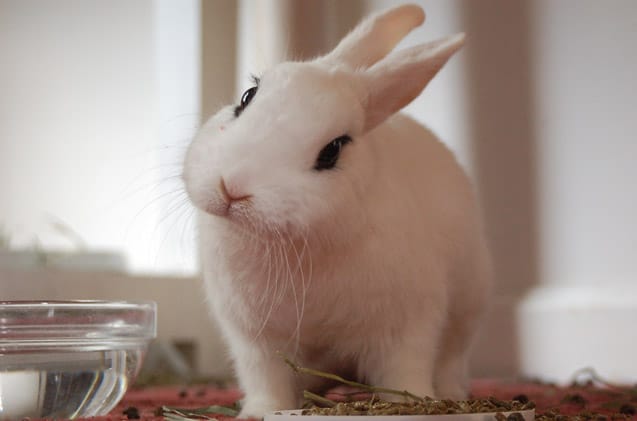
3. Dwarf Hotot Rabbit
The Dwarf Hotot Rabbit is part of the dwarf family of rabbit breeds, meaning that they display the physical traits associated with having the dwarfism gene. As dwarf rabbits, even when fully grown they only weigh from 2.5 to 3.5 lbs.
This breed of rabbits has a long and colorful history. The Dwarf Hotot rabbit is a result of many experiments that are a tale worth hearing.
Once upon a time, two rabbit breeders wanted to create a miniature version of the larger Blanc de Hotot Bunny. One of these breeders crossbred the Blanc De Hotot with a Netherland Dwarf while the other made use of a Dutch Rabbit with the Netherland Dwarf.
Both breeders created beautiful bunnies, but neither had reached their goal of a smaller version of the Blanc de Hotot Bunny.
But when the two breeders combined their efforts and further crossbred the babies of each experiment they finally gave birth to the Dwarf Hotot that we know and love…and they all lived happily ever after.
The Dwarf Hotot has distinctive features such as its immaculately white fur and dark eye markings which have rightfully earned them the name “eyes of the fancy”.
Since this breed carries the dwarf gene, they have stout bodies and short ears which are traits of dwarf rabbits. For the longest time, pure white Dwarf Hotots with black eye bands were the only color of coat that was accepted by ARBA. However, ARBA has also opened the doors for Dwarf Hotots with chocolate eye bands.
Dwarf Hotots are small in size and are not generally as active as other rabbit breeds. They were also once notorious for biting judges during rabbit shows. However, this behavior has been bred out of the breed by choosing friendly bunnies for breeding stock in the last few decades.
Modern-day Dwarf Hotots are sociable and affectionate. They might be a small breed but they do not mind being held by their owners. It is important to note however that moods and breed temperaments can vary from one individual to the other.
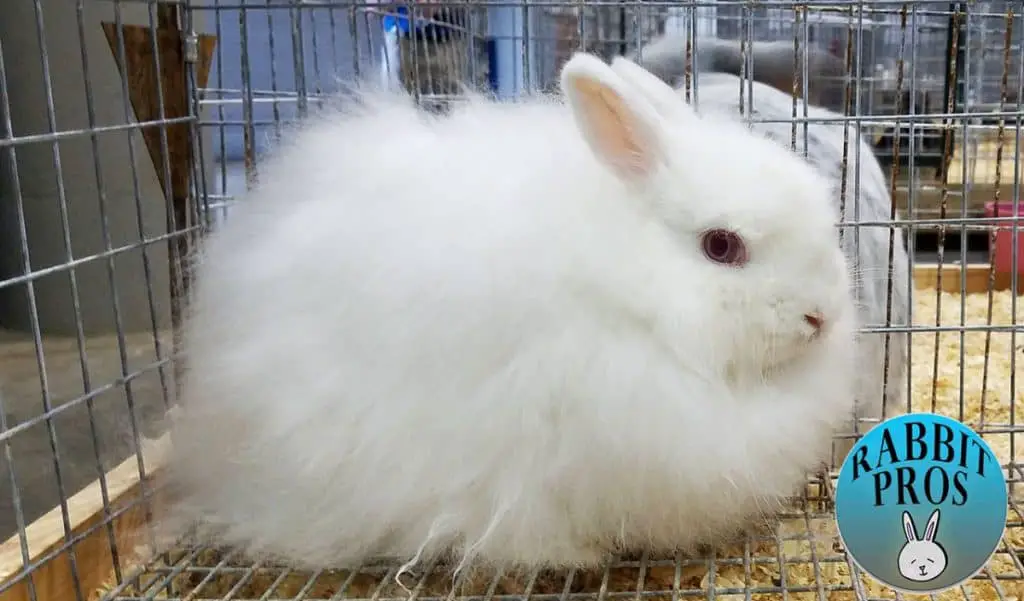
4. Jersey Wooly Rabbit
The Jersey Wooly Rabbit is a dwarf rabbit that carries the dwarfism gene and the square head which is a tell-tell trait of dwarfism. When fully grown this small breed of rabbit can only weigh from 2 to 3.5 lbs.
The Jersey Wooly is a fairly new rabbit breed. It was first bred by Bonnie Seely of New Jersey by crossing a Netherland Dwarf and a French Angora.
This breed is called a “mug head” because of its distinct squarish head. They carry a dwarfism gene and therefore exhibit the usual traits for dwarf-sized rabbits. They have a stout, short body that is semi-arched.
The Jersey Wooly Rabbits are affectionate and cuddly bunnies that make great pets as long as you’re committed to regular grooming to keep their wool tangle-free and beautiful.
Fortunately grooming this breed is not a huge chore. They do not need to be trimmed or sheared to keep their wools at a healthy length, though they do need to be brushed to avoiding matting.
This breed comes in a variety of colors.
The Jersey Wooly is bred to have the characteristics of the perfect pet rabbit. This breed is naturally docile, sweet-tempered, intelligent, and highly affectionate.
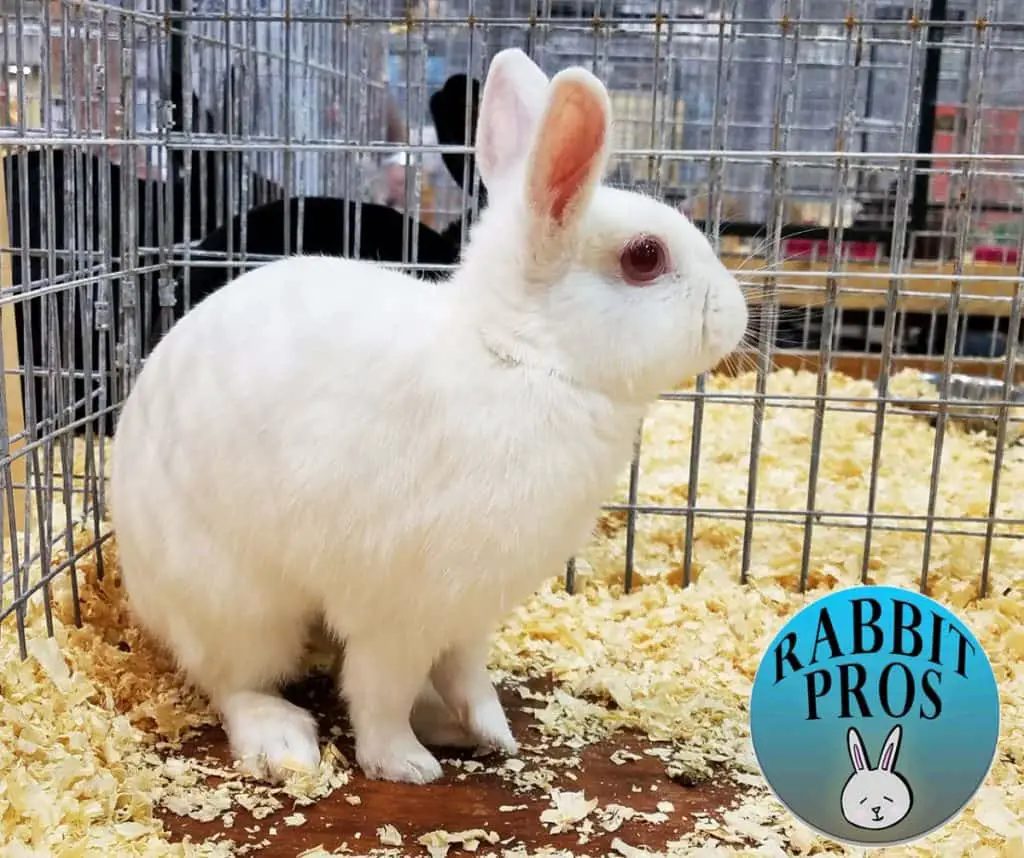
5. Polish Rabbit
The Polish rabbit Breed is a small rabbit breed that can only weigh from 2.5 to 3.5 lbs when fully grown. It is a mini rabbit breed with no traits consistent with having the dwarfism dream. Instead, it’s just a very small rabbit.
The breed’s history is still a very contentious topic. It might be called Polish but its origins are believed to have started in England.
Polish Rabbits are the bunny of choice for magicians. This is very ironic given that the Polish Rabbits just appeared out of nowhere. You can say it was like they were pulled out of a hat!
During the 1800s they just started appearing in the market and people called them “Polish”. The reason as to why people chose this name remains a mystery, yet the name stuck.
It is rumored, however, that this breed came about by crossing the Himalayan rabbit with the Dutch Rabbits.
Polish rabbits are best known for their big cheeks, huge eyes, and short ears. They have short fly-back fur that comes in a variety of colors. Polish rabbits can come in 6 varieties of coats: Blue, Red-Eyed White (REW), Blue-Eyed White (BEW), Chocolate, and Broken Patterned.
Polish Rabbits are a healthy breed that is intelligent, playful, and affectionate. They do not have any qualms about being held by their owners. After all, they’re so used to being pulled out of a magician’s hat we’re pretty sure they love to be the star of any show.
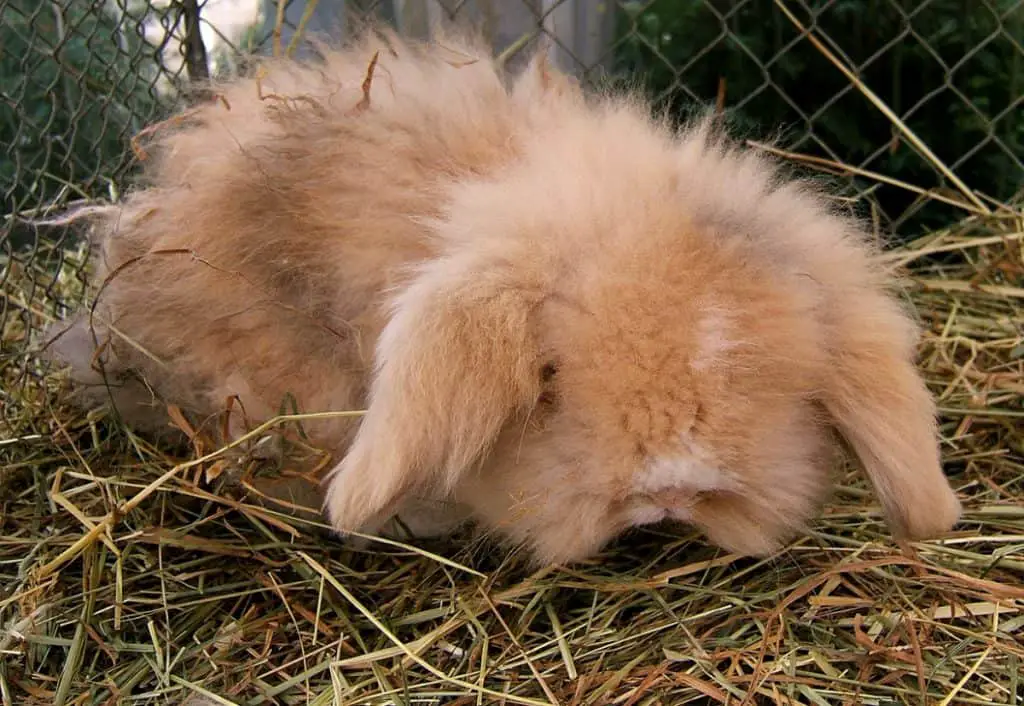
6. Teddy Dwarf Rabbit
The Teddy Dwarf Rabbit is, as the name implies, a dwarf rabbit breed with all of the traits associated with a rabbit that has the dwarfism gene.
The Teddy Dwarf Rabbit is a rare rabbit breed. It goes by different names such as “Teddyzwerg” or “Teddywidder”.
This breed originated from Germany by crossing the Angora Rabbit and the Lionhead Rabbit. They can only grow from 1.8 to 3.7 lbs. This rabbit breed is very recent as well because it was only created last 2009.
This breed of rabbit has lop ears. Their fur is long and luscious. Unfortunately, this breed of rabbit is not yet considered an official breed. One of the reasons for this is that this breed has long hair. Long hair in rabbits can cause matting and is therefore believed to be detrimental to the rabbits’ health.
Grooming this breed needs commitment as forgetting it will earn you a matted, knotted mess for a pet bunny.
If you would like more information on this bunny we have an article about the Teddy Dwarf/Teddyzwerg/Teddywider Rabbit.
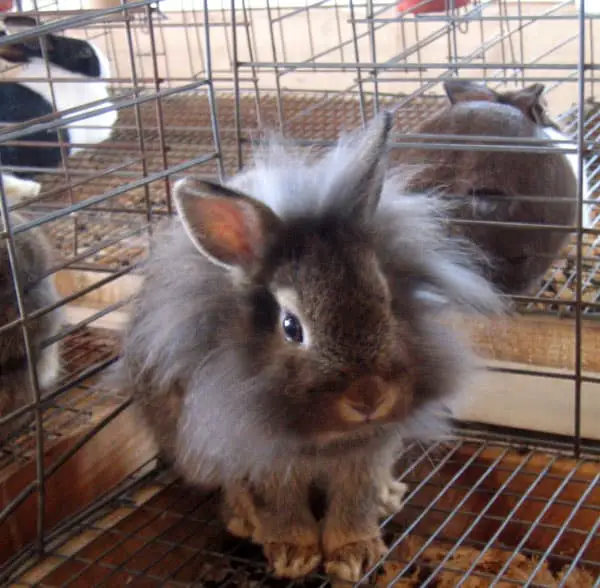
7. Lionhead Rabbit
The Lionhead Rabbit has the dwarfism gene passed down from their Netherland Dwarf ancestors. But it’s not their dwarf features that make them so noteworthy, but their amazing lion-like manes.
We love to call this breed of rabbit the Simba of the Rabbit Kingdom. Lionhead rabbits are well known for their wool mane that circle their cute heads.
The breed originated from Belgium when breeders were trying to cross a Swiss Fox and a Netherland Dwarf. The result of this breeding was a genetic mutation that became the Lionhead’s greatest feature, their mane.
A Lionhead can have a single mane or a double mane. A single mane Lionhead does not maintain its mane its entire life. Their manes are also wispy or thin. A double mane Lionhead however is the exact opposite. These breeds have thick, luscious manes that circle their heads and even their flanks.
Lionheads are a small rabbit breed that can only weigh from 2.5 to 3.5 lbs.
A Lionhead rabbit’s ears are held upright and are slightly pointed at the top. A Lionhead rabbit has a head that is bigger than its body. Its tiny pointed ears are held upright on its head. The coat of the lion head also comes in a variety of colors such as chocolate, black, agouti, smoke pearl, sable, etc.
Are you getting a new bunny? Here is a list of over 1,800 bunny name ideas sorted by color!
The Lionhead topped our list for the most affectionate bunny breeds. Unlike lions in the wild, Lionhead bunnies have fully denounced living the wild-life and have completely embraced domestic living with us as their chosen companions.
They might be considered as a fancy breed, but Lionheads are not picky when sharing their love. They are perfect pets for families. Lionheads are gentle and intelligent. They are playful and well-mannered and they love getting cuddles from their family
8. Miniature Lion Lop Rabbit
Miniature Lion Lop is also a very recent breed. The breed originated in the United Kingdom in the early 2000s.
Based on the breed’s name it is easy to guess its lineage. The Miniature Lion Lop is bred from the Lionhead rabbits and Miniature Lops. The credit for originating this new fascinating bring is given to Jane Branley.
This breed had been recognized by the British Rabbit Council in 2006. However, the American Rabbit Breeders Association has yet to officially recognize the breed.
The dominant gene for the Miniature Lion Lop is the gene from the Lionhead. This means that this breed can be produced by crossing Lionheads with Mini Lops and Dwarf Lops.
This breed also looks like the Miniature Lop. It features the same cute floppy ears that hang to its jaws. However, due to its Lionhead ancestry, it also boasts of a luscious mane and furry chest. It also has a broad and short body. They have round rumps and short legs. The breed has no discernible neck, it has eyes that are widely set apart.
The Miniature Lion Lop is specifically bred to be a pet and thus they also boast the characteristics of the perfect pet. They are lively, active, and curious, surely fun to be around.
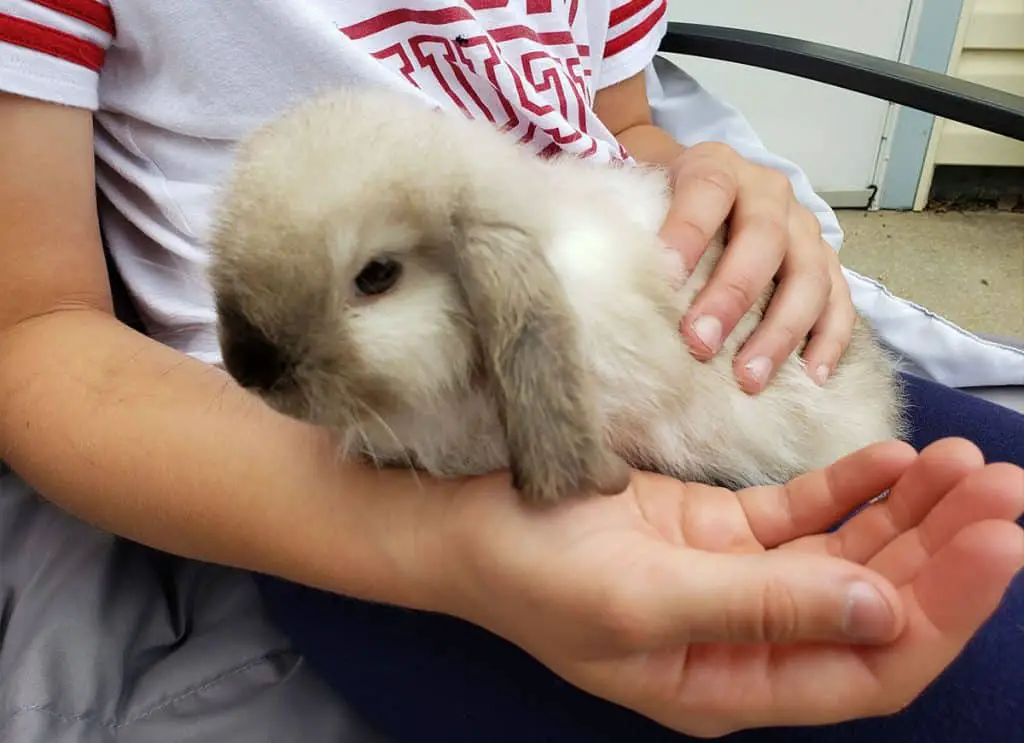
9. Holland Lop Rabbit
The Holland Lop Rabbit carries the dwarf gene and all of the physical traits associated with that gene.
The Holland hop is one of the most popular pet rabbit breeds in the United States. Their very distinct features coupled with their small size make them irresistible to all bunny lovers.
The Holland lop can only weigh from 2 to 4 lbs fully grown.
The first Holland Lop was bred by Adrian De Cock from the Netherlands. The breed came about by crossing French Lops and the Netherland Lops. The result of this breed wasn’t exactly the best so the breed was once again crossed with the English Lops. There is also a British equivalent of this breed called the Mini Lop.
The Holland Lop’s distinct feature is its ears. The ears of this breed are long and hang below their jaws. For the Holland lop, it also boasts of a crown on the top of its head. The Holland lop carries the dwarf gene so it has a short stout body with a broadhead. The breed also boasts a variety of colors such as black, chocolate, fawn, and agouti to name a few.
The Holland lop is also a very gentle, well-mannered breed. It is relatively active and therefore enjoys time outside of its hutch to play. Holland lops are also believed to behave more like cats as they tend to rest on their hind legs. The temperament of this breed makes it the perfect pet rabbit for seniors, first-time pet owners, and families with little children.
How to take care of small rabbit breeds?
Small rabbit needs special care. Due to their small size, some of these rabbit breeds tend to be wary and easily scared. It is also due to their size that they tend to be more nervous than their larger cousins.
It is important to know that rabbits are usually preyed on by bigger animals in the wild and this characteristic still has echoes in the personality of domesticated rabbits of today.
When playing with these small breeds it is important to treat them as fragile. It is recommended to avoid loud noises and sudden movements. Children should also be supervised when playing with smaller rabbits.
To avoid injury, all family members should be taught the proper way of handling them. Dropping small rabbit breeds should be avoided at all costs.
Grooming for small breeds of rabbits is not necessarily harder than the larger breeds. It all depends on the amount of fur that your rabbit breed has. Breeds with longer fur would need to be groomed more regularly than those with short fur.
Dental health care and nail trimming aren’t different for small rabbit breeds as well. They also need to be regularly exercised.
These breeds might not need big hutches/cages like the bigger breeds but they still need time for play and exercise if they are to live a healthy life.
The Smallest Rabbit Breed In The World Is A Wild Rabbit
The smallest rabbit in the world is not a domesticated breed. The smallest rabbit in the world is a wild rabbit called the Columbia Basin Pygmy Rabbits. This breed is special because not only is it the smallest but it’s also on the brink of extinction.
They were listed endangered last 2001 when only 16 were left of their population. The Pygmy rabbit can only be found in one part of the Washington State Area.
Another reason for the breed’s endangered status and rarity is that it does not breed like common rabbits. The Pygmy litter is small and therefore, loss of habitat has greatly impacted this rabbit’s population.
Columbia Basin Pygmy Rabbits weigh less than a pound when fully grown, which makes them significantly smaller than the smallest domestic rabbit, the Netherland Dwarf Rabbit. They also grow under 1 foot long toe-to-toe when stretched out.
Imagine that, a rabbit that is smaller than your standard ruler!
These rabbits have short bodies and fluffy fur. This breed is genetically different from other rabbits. Its fur for example protects this rabbit from the harsh winters and keeps them cool during the punishing summers. The breed is also characterized by its grayish-brown coat.
This breed is not recommended to be kept as pets. Not only are they considered to be critically endangered they also are skittish and nervous and belong to the wild. There are no records of domesticated Pygmy Rabbits and we should hope to keep it that way at least until the population has recovered and perhaps forever.
____________________
Do you have any experience taking care of these small breeds? Come and share your story in the comments! Let’s all work toward building a bunny-loving community.
